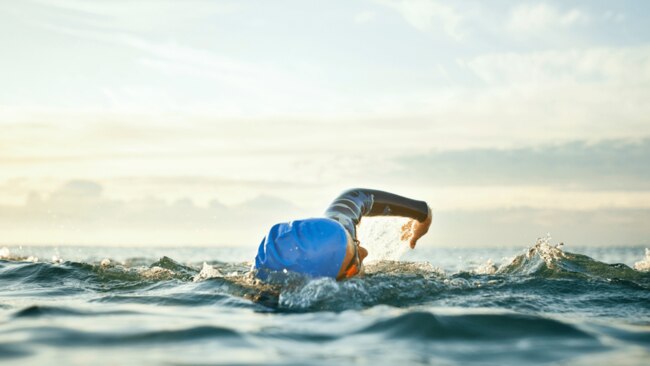How to train for a fitness bucket list event this year
Preparation is key
Lifestyle
Don't miss out on the headlines from Lifestyle. Followed categories will be added to My News.
From knowing which is the best event for your goals to creating the most effective training plan, this expert advice will get you to the finish line feeling good.
Ah, January. It’s the time when most of us set a goal along the lines of packing our lunch each day, cutting down on coffee or something else in the realm of being healthier.
For some of us, however, 2024 will be the year we finally tick off a major fitness goal.
Regardless of whether it’s booking an overseas marathon or running your first 5K since having a baby, entering an event takes physical and mental preparation to ensure you’re ready to cross the finish line.
Like what you see? Sign up to our bodyandsoul.com.au newsletter for more stories like this.
One person who knows this all too well is Fitstop’s head of product, Nikki Rizzo. She has completed several triathlons, multiple marathons and even an Iron Man (which for the uninitiated involves a 3.8 km ocean swim, 180 km bike ride and 42 km run), which means she’s had plenty of experience prepping for a physical feat.
We sat down with the fitness professional to get her top tips on how to train for - and smash - your fitness bucket list event this year.
Choose your event wisely
Do you want to run a marathon because your mate who has been running her whole life does? Or is your goal to do an ocean swim just because your partner has signed up for one, whereas you don’t even enjoy being in the water?
“It’s really important to find something you enjoy doing, and what you have always wanted to do - this will help you achieve your goal but also ensure you enjoy the training process,” Rizzo explains.

“Training for a fitness bucket list event takes dedication, time and effort so it needs to be something you do for yourself - not for others.”
Although your goal should challenge you, it should be achievable.
“If you’re not a runner, going from no running to a marathon will take incredible effort and you may injure yourself along the way unless you allow adequate time for your body to gradually adapt to the training load.”
Your best bet? Consider doing a half marathon in six months to give you enough time to train without being too hard on your body. Achieving a smaller goal along the way will also help keep you motivated.
Find someone to do it with
Buddying up with someone to do it with can help you stay motivated throughout your training.
“There is a level of sacrifice that comes with dedicating time to train for an event, so it is far less isolating and a lot more fun doing it with peers. I have never signed up for an event alone,” she says.
As a bonus, doing it with someone else means that you have an accountability buddy. It’s easy to hit the snooze button in the morning if it’s raining and you don’t feel like training, but it’s harder if it means letting someone down.

“That’s why I love group training. Exercising with like-minded people and sharing the experience with others makes you feel like you are part of a community, and you share it all - the struggles, the successes and celebrate the milestones along the way.”
Ensure you train holistically
Even if the event you have in mind focuses on one type of exercise - for example, a marathon or ocean swim - to optimise your performance and prevent injuries, it’s important to follow a well-rounded training program where your body is exposed to different intensities throughout the week.
“If you are a runner, for example, you should be adding strength training to your regime - this will not only make you stronger but will help prevent any injuries,” she explains.
Try and follow a holistic fitness training program that incorporates elements of strength, metabolic conditioning and endurance across the week, to help complement your event-specific training.
Set smaller goals along the way
Rizzo says it’s important to set mini-goals along the way to achieve the long-term goal.

“Make sure you break down your goals into smaller, more manageable steps. If you can find joy and stick to the process, achieving the goal will be the easy part. Start with small daily actions that will help you move closer to your goal.”
To stay motivated, celebrate each milestone along the way - loud and proud!
Prioritise recovery
With any form of physical activity or exercise comes the need for recovery, and this is particularly important when training for an event.
Physical exercise puts an element of stress on the body. Your recovery time after exercise is when your body adapts to this stress and helps you get fitter and stronger.
The best thing you can do to help speed up the recovery process is to prioritise sleep and schedule some active recovery in the form of a gentle walk, swim, cycle or stretch.
“It’s also important to fuel your body adequately, so eat nutritious food, drink plenty of water, and limit alcohol consumption,” she adds.
More Coverage
Originally published as How to train for a fitness bucket list event this year





